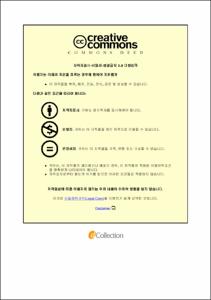Comparison of real-time temperature monitoring during laser treatment and HIFU treatment
- Alternative Title
- 레이저 치료 및 HIFU 치료 중 실시간 온도 모니터링 비교
- Abstract
- Understanding the temperature development during treatment on tissue is often critical for achieving good clinical outcomes. In this study, we proposed to investigate and compare the feasible application of various real-time temperature monitoring tools for laser treatment and HIFU treatment. Laser treatment on tissue, a 4 W 980 nm laser light was utilized with a 600 µm core-diameter diffuser was employed to deliver light into tissue. Both a thermocouple type K and an FBG were comparatively performed to evaluate temperature develops in ex vivo bovine liver tissue. The degree of tissue damage was estimated as a function of irradiation times and temperature development. At the distance was close to a diffuser, after 120 s irradiation, the thermocouple type K risen up to 41% higher maximum temperature than the FBG sensor did (i.e., 98.7 ± 6.1 oC for FBG vs. 131.0 ± 5.1 oC for thermocouple; p < 0.001). The experiment in ex vivo porcine urethra confirmed the real-time temperature monitors of the FBG sensor as well as consistently circumferential tissue coagulation after 72 s irradiation (coagulation thickness = 2.2±0.3 mm). The FBG can be a feasible sensing tool to real-time monitor the temperature developments during laser treatment of tubular tissue structure. High Intensity Focused Ultrasound (HIFU) treatment on tissue, a custom HIFU driver was utilized to deliver a 50 V output power square-wave signal at 2 MHz transducer with continuous wave operation in ex vivo. A thermocouple type K was utilized to estimate temperature increase in ex vivo bovine liver. The temperature feedback from the temperature controller-integrated HIFU driver modulated the HIFU driver output power to maintain 55 oC temperature during 120 s. The results show that, at the closed focal beam, the temperature controller increased the temperature up to 55 oC and maintained the temperature for the rest of the treatment time. The proposed temperature controller-integrated HIFU driver can be a feasible tool to estimate the quantitative temperature in real-time during HIFU treatment and eventually to predict the need of further treatment for the coagulation management.
- Issued Date
- 2018
- Awarded Date
- 2018. 8
- Type
- Dissertation
- Keyword
- monitoring temperature
- Publisher
- 부경대학교
- Alternative Author(s)
- 팜티넛
- Affiliation
- 부경대학교 대학원
- Department
- 대학원 의생명기계전기융합공학협동과정
- Advisor
- Kang, Hyun Wook
- Table Of Contents
- Table a of Contents i
List of Figures iii
List of Tables v
Abbreviations vi
Abstract vii
Chapter 1. Introduction 1
1.1. Motivation 1
1.2. Thesis contribution 2
1.3. Reference 2
Chapter 2. Real-time monitoring temperature during laser treatment. 3
2.1. Abstract 3
2.2. Introduction 3
2.3. Materials and Methods 6
2.3.1. Experimental set-up 6
2.3.2. Diffusing fiber fabrication 8
2.3.3. Numerical simulations 10
2.3.4. FBG temperature sensor principle 13
2.4. Results 15
2.4.1. FBG temperature sensor calibration 15
2.4.2. Comparison between FBG sensor and Thermocouple 15
2.4.3. Comparison between FBG sensor and Simulation data 17
2.5. Discussion 23
2.6. Conclusion 27
2.7. References 27
Chapter 3. Real-time temperature monitoring during HIFU treatment 30
3.1. Abstract 30
3.2. Introduction 30
3.3. Materials and Methods 32
3.3.1. HIFU driver design 32
3.3.2. Experimental set-up 34
3.4. Results 36
3.4.1. Characteristics of HIFU driver 36
3.4.2. Characteristics of HIFU transducer 38
3.4.3. Monitoring temperature during HIFU treatment in ex vivo 42
3.5. Discussion 42
3.6. Conclusion 44
3.7. Reference 45
Chapter 4. Conclusions and Further Study 48
4.1. Finding 48
4.2. Further study 48
Acknowledgments 50
Appendix 51
Publication 51
Award 51
- Degree
- Master
- Files in This Item:
-
-
Download
 Comparison of real-time temperature monitoring during laser treatment and HIFU treatment.pdf
기타 데이터 / 3.09 MB / Adobe PDF
Comparison of real-time temperature monitoring during laser treatment and HIFU treatment.pdf
기타 데이터 / 3.09 MB / Adobe PDF
-
Items in Repository are protected by copyright, with all rights reserved, unless otherwise indicated.